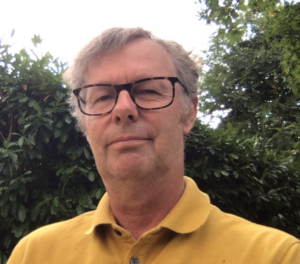December 12th, 2024
 Wireless networks are the most interesting embodiment of telecommunication technologies. Wireless networks are those most influenced by the physics of space and time. The medium of information transport is the electromagnetic field, which interacts strongly with the environment and can undergo rapid variations, given the mobility of users and the variability of their environment. In the wired world of the Internet, a transmission link is stable. It can fail, but this event is so infrequent that the line restoration protocol is cumbersome and cannot be invoked too frequently. In a mobile wireless network, mobile users may not be within range of each other, so connectivity will be ensured by internal routing between mobile users. In this context, the appearance and disappearance of a link is a natural and frequent event, so the network must constantly monitor its topology, and the resulting performance is highly dependent on mobility. We present two theoretical consequences of this situation. The spatial capacity paradox, where it is shown that an increase in user density can increase the network’s transport capacity, i.e. the amount of information that can be transported in the network per unit time. This unexpected result, which occurs without modifying the information carrier, seems quite counter-intuitive. Total capacity varies as $n^{1-1/D}$ where $n$ is the total number of users and $D$ the dimension of the integration space (1, 2 or 3). Note that each user’s share decreases in $n^{-1/D}$, which means that if the volume of the cake increases, the individual shares decrease.
Wireless networks are the most interesting embodiment of telecommunication technologies. Wireless networks are those most influenced by the physics of space and time. The medium of information transport is the electromagnetic field, which interacts strongly with the environment and can undergo rapid variations, given the mobility of users and the variability of their environment. In the wired world of the Internet, a transmission link is stable. It can fail, but this event is so infrequent that the line restoration protocol is cumbersome and cannot be invoked too frequently. In a mobile wireless network, mobile users may not be within range of each other, so connectivity will be ensured by internal routing between mobile users. In this context, the appearance and disappearance of a link is a natural and frequent event, so the network must constantly monitor its topology, and the resulting performance is highly dependent on mobility. We present two theoretical consequences of this situation. The spatial capacity paradox, where it is shown that an increase in user density can increase the network’s transport capacity, i.e. the amount of information that can be transported in the network per unit time. This unexpected result, which occurs without modifying the information carrier, seems quite counter-intuitive. Total capacity varies as $n^{1-1/D}$ where $n$ is the total number of users and $D$ the dimension of the integration space (1, 2 or 3). Note that each user’s share decreases in $n^{-1/D}$, which means that if the volume of the cake increases, the individual shares decrease.
The time capacity paradox shows a similar phenomenon, but linked to time. In simple terms, networks based on internal routing transmit packets as soon as they are received. By introducing time delay, transport capacity is increased, as the geometry of the network can evolve and become more favorable to the transmission of information. Under certain (sometimes unrealistic) conditions of mobility, with infinite tolerance to delays (a packet can take months to be delivered), total capacity can be increased to the order of $n$, i.e. the individual shares of the cake no longer decrease.
Bio: Philippe Jacquet has been with Inria, Rocquencourt-Paris center until 2011. In 2012 he spent an extended sabbatical with Nokia Bell Labs. In 2019 he’s back in Inria as research director in the Saclay-Ile-de-France center, in the research team TRIBE. Meanwhile he has been professeur chargé de cours in Ecole Polytechnique (France) from 2006 to 2016. His current scientific interests are the analysis of algorithms, information theory, wireless telecommunication and artificial intelligence. He was lucky enough to witness the rise of wireless local area networks, with WiFi and HIPERLAN, and the advent of mobile ad hoc networks with OLSR. He’s an IEEE Fellow in the Information Theory Society.

